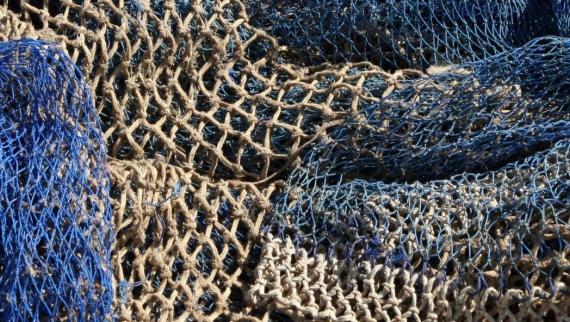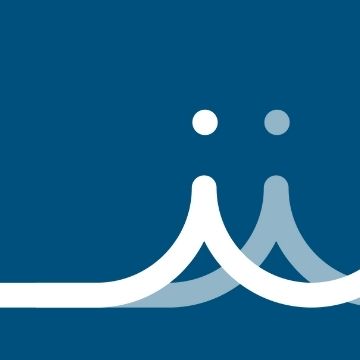Food Biochemistry
The importance of marine products for the nutrition of our communities, together with the impact they may have on the environment, calls for actions that increase our security as consumers while decreasing their ecological cost.
The IIM-CSIC's Food Biochemistry group works to develop tools and bio-processes to demonstrate that a sustainable, responsible and resilient fishing industry is achievable by promoting an integral use of fish discards and fish by-products and by developing genetic molecular marker tools to improve traceability and authenticity. With this goal in sight, the Food Biochemistry group investigates along three main work lines.
The first line focuses on the development of analytical tools to allow for the identification and quantification of marine organisms by means of genetic molecular markers to control traceability and labeling of fishery products. The group contributes to improving traceability and sustainability of marine products by developing tools to prevent food fraud.
The second line strives to develop bioprocesses to valorize fish discards and fish by-products. By these means, the group tries to obtain bioactive compounds, such as collagen, chitin or fish protein hydrolysates, useful for different industrial applications.
Last but not least, the third line of work consists of the development of electronic tools or infrastructures to quantify total captures and analyze the optimal spatio-temporal conditions that contribute to more efficient fishing strategies.
- LIFE REFISH -
<p>Flexible biorefinery to valorise discards and by-products of the European fish and seafood production (REFISH)</p>
Principal investigator:VázquezÁlvarezXosé AntónFunding body:LIFE Environment (Nature & Circular Economy)Funding for IIM-CSIC:357637€Go to project pageFromto - SEAFOOD-ID -
<p>ANALYTICAL STRATEGIES BASED ON NON-DESTRUCTIVE METHODS AND METAGENOMICS FOR THE CONTROL OF PRODUCTION METHOD AND GEOGRAPHIC ORIGIN</p>
Principal investigator:GonzálezSoteloCarmenPérezMartínRicardo IsaacFunding body:Proyecto PID2020-118012RB-C21 financiado por MCIN/ AEI /10.13039/501100011033Funding for IIM-CSIC:168000€Go to project pageFromto - ISEAS -
<p>Nanopartículas con hidrolizados de colágeno marino: aplicaciones en cosmética</p>
Principal investigator:PérezMartínRicardo IsaacFunding body:CSICFunding for IIM-CSIC:52000€Go to project pageFromto - BBM -
<p>Biotecnología y Bioprocesos Marinos</p>
Principal investigator:GonzálezSoteloCarmenFunding body:Ayudas cofinanciadas con fondos de la Agencia Gallega de Innovación de la Xunta de GaliciaFunding for IIM-CSIC:75000€Go to project pageFromto - COLAGENO -
<p>Estructura y función del colágeno: Mapeo peptídico y aplicaciones cosméticas</p>
Principal investigator:GonzálezSoteloCarmenFunding body:CSICFunding for IIM-CSIC:33500€Go to project pageFromto
- Alves, A.L.; Costa-Gouveia, J.; Vieira de Castro, J.; Sotelo, C.G.; Vázquez, J.A.; Pérez-Martín, R.I.; Torrado, E.; Neves, N.; Reis, R.L.; Castro, A.G.; Silva, T.H. (2022) Study of the immunologic response of marine-derived collagen and gelatin extracts for tissue engineering applications Acta Biomaterialia DOI:10.1016/j.actbio.2022.01.009
- Melado-Herreros, Á.; Nieto-Ortega, S.; Olabarrieta, I.; Ramilo-Fernández, G.; Sotelo, C.G.; Teixeira, B.; Velasco, A.; Mendes, R. (2022) Comparison of three rapid non-destructive techniques coupled with a classifier to increase transparency in the seafood value chain: Bioelectrical impedance analysis (BIA), near-infrared spectroscopy (NIR) and time domain reflectometry (TDR) Journal of Food Engineering DOI:10.1016/j.jfoodeng.2022.110979
- Blanco, M.; Sanz, N.; Sánzhez, A.C.; Correa, B.; Pérez¿martín, R.I.; Sotelo, C.G. (2022) Molecular weight analysis of blue shark (Prionace glauca) collagen hydrolysates by gpc‐ls. effect of high molecular weight hydrolysates on fibroblast cultures: Mrna collagen type i expression and synthesis International Journal of Molecular Sciences DOI:10.3390/ijms23010032
- Alves, A.L.; Fraguas, F.J.; Carvalho, A.C.; Valcárcel, J.; Pérez-Martín, R.I.; Reis, R.L.; Vázquez, J.A.; Silva, T.H. (2022) Characterization of codfish gelatin: A comparative study of fresh and salted skins and different extraction methods Food Hydrocolloids DOI:10.1016/j.foodhyd.2021.107238
- Ramilo-Fernández G; Sotelo CG; Pérez Martín RI; González-Solla González J; Bellón A (2021) Dálle Valor ao Peixe (DVP): una experiencia piloto de interacción entre ciencia y cocina para fomentar una conducta alimentaria más saludable y sostenible en la población infantil MOL
- PhD - Diana Noriega Rodríguez (27/06/2018) Development of extraction methods to obtain high added-value products from industrial processing wastes of "Illex argentinus" and "Cynara scolimus" Universidade de Vigo (UVIGO)
- PhD - Carla Daniela Gonçalves Lopes (26/07/2017) Experimental design, kinetic modelling and environmental impact in processes of fish discard valorisation Universidade de Vigo (UVIGO)
- PhD - MARIA BLANCO COMESAÑA (14/12/2015) Valorización de descartes y subproductos de pintarroja (Scyliorhinus canicula) Universidade de Vigo (UVIGO)
- PhD - Ana Cristina Sánchez Díaz (13/04/2012) Identificación y cuantificación de especies del género Merluccius mediante la utilización de PCR a tiempo real, UNIVERSIDAD DE VIGO
<p>Estudios de viabilidad para la valorización de cabezas de tiburón azul y de efluentes de la cocción de mejillón y de cefalópodos</p>
Principal investigator:VázquezÁlvarezXosé AntónFunding body:Conservas RIANXEIRA SAUFunding for IIM-CSIC:84700€Go to project pageFromto
- Capabilities | Development and application of molecular methodologies for the identification and quantification of marine species in environmental samples
Identification of new molecular markers for species identification through Next-Generation Sequencing in environmental DNA samples, with applications for biodiversity monitoring and fisheries stock assessment.
- Capabilities | Biodiversity AssessmentMarine instruments & sensors Coastal & Environmental Protection Maritime Spatial Planning Ecosystem Services & Governance
Monitoring temporal and spatial distribution of species, abundance and biomass from several taxa using different techniques such as e-DNA, pigment characterization, flow cytometry, acoustic telemetry, images collected from remote observation systems (i.e. drones, etc.) or classic taxonomic identification.
- Capabilities | Development of new food products from fisheries and aquaculture by-products
Development of processes for the transformation of discards and seafood by-products into new raw materials (fish mince, fish oil, etc.) with added value for the generation of innovative processed food products (hamburgers, nuggets, etc.), ensuring traceability, nutritional value and safety in new value chains.
- Capabilities | Development of bioprocesses (biorefineries) for the extraction of bioproducts and bioactive compounds from food industry by-products
Development of processes that allow extracting useful components of industrial interest from discards and food industry by-products and effluents. Biochemical characterization of useful components present in different kinds of fisheries products and by-products, such as skin collagen, visceral enzymes, chondroitin sulphate present in cartilage, chitin from crustacean shells and cuttlebone or protein hydrolysates obtained from muscle. Evaluation of potential applications of these compounds through the characterization of their biological activities (antioxidants, etc.) and functional properties for their use in different industries, such as biomedical, chemistry, cosmetic, food, etc.
- Capabilities | Development of “in vitro” bioactivity tests for biomolecules using cell lines and specific gene expression tests
Development of techniques (metabolomics, proteomics, genomics, lipidomics, biomarkers) to characterize the response of cells to different biomolecules and to validate their activity and safety.
Authors: Carmen González Sotelo; Isabel Medina; Ricardo Pérez Martín; Javier Quinteiro Vázquez; Manuel Rey Méndez
Technique for the differentiation of various tuna species in canned tuna products, consisting of the sequential use of a set of restriction endonucleases on an amplified 187-bp fragment known as bdr of the b cytochrome in the mitochondrial ADN. Thus, Thunnus thynnus, T. obesus, T. albacares and Katsuwonus pelamis are distinguished by fragment analysis. More detailed information can be found here.
Authors: Carmen González Sotelo; Isabel Medina; Ricardo Pérez Martín; Javier Quinteiro Vázquez; Manuel Rey Méndez
Technique for the identification of Auxis thazard in preserved fish products, which consists of the amplification of a 187-pb fragment (BDR) of the cytochrome b gene in mitochondrial DNA by the use of a restriction endonuclease. This allows distinguishing it from other species used as substitutes for Auxis thazard. More detailed information can found here.
Authors: Carmen González Sotelo; Isabel Medina; Ricardo Pérez Martín; Javier Quinteiro Vázquez; Manuel Rey Méndez
Technique for the identification of Thunnus alalunga in preserved tuna products, which comprises the amplification of a 187-pb fragment (BDR) of the cytochrome b gene in mitochondrial DNA by the sequential use of two endonucleases. This allows distinguishing it from other species used as substitutes for Thunnus alalunga in canned products. More detailed information can be found here.
iObserver is an innovative monitoring device based on automated video monitoring coupled with artificial intelligence developments for visual recognition and quantification of the catches on board fishing vessels.
iObserver implements a continuous image recording system adaptable to different fishing vessels and deep learning algorithms to automatically identify and quantify catches on board in real time.
iObserver focuses mainly on developing algorithms for robust automatic species recognition and size estimation of fish transported on a conveyor belt. Trials have been performed on board Spanish oceanographic vessels and commercial vessels. With over 300 days at sea, iObserver was used in more than 1000 hauls and took more than 200,000 pictures, and 17 species have already been included in the system's catalogue.
For further information, please contact us by e-mail.
























